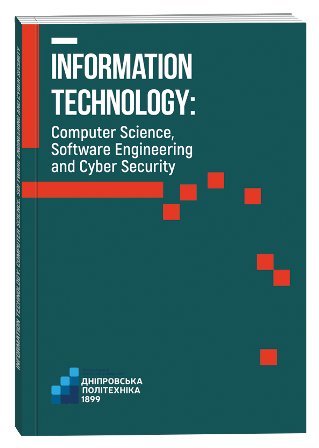GEOINFORMATION TECHNOLOGY FOR DETECTING AND MODELING FLOODED AREAS OF DUBAI BASED ON CONVOLUTIONAL NEURAL NETWORK
DOI:
https://doi.org/10.32782/IT/2024-4-13Keywords:
flood zone, convolutional neural networks, image classification, modeling, satellite data.Abstract
Detecting flooded areas is essential for effective disaster response and management, as it allows for the creation of early warning systems and the organization of targeted assistance. The purpose of the work is to develop geographic information technology for detecting and modeling flooded areas in Dubai based on convolutional neural networks. Methodology. The geoinformation technology of the study consists of several stages that provide a comprehensive approach to the analysis and modeling of flooding. First, satellite images are downloaded and preprocessed. This includes correction of atmospheric distortions, color alignment, and geometric distortions. After that, the images are converted into a vector format to facilitate their further processing and analysis. Vectorization allows you to more accurately identify key elements in the images, such as rivers, roads, buildings, etc. The next step is to integrate climatic and hydrographic data, as well as a digital elevation model (DEM). This data is used to build a geodatabase that includes information on precipitation, hydrological conditions, soil types, and vegetation in the study area. Using a digital elevation model allows us to take into account the altitude characteristics of the terrain, which is critical for accurate modeling of water flows and flood zones. Machine learning methods, such as transfer learning, are used to process and analyze this data, which makes it possible to improve the accuracy of flood zone modeling. The hydrological model calculates extreme hydrological parameters based on climatic and hydrographic data, such as precipitation, soil type, land use, and vegetation cover. These parameters allow for the creation of a soil number curve and hydrograph that reflect the behavior of water runoff in the area. The next step is to apply a hydraulic model to determine flow parameters, such as flow velocity, and water depth, and predict areas of potential flooding. Flooding modeling is based on the implementation of a digital elevation model in ASCII grid format with a size of 30 meters. This grid is imported into the geographic information system (GIS) QGIS to perform calculations and modeling of flood zones. The final step is to create a map of flood hazard zones. This map allows for effective visualization of potentially hazardous areas, which is an important tool for decision-making in flood risk management and the development of measures to protect areas from flooding. The scientific novelty of the results obtained in this work consists of the application of transfer learning to detect flooded areas based on satellite images. The architecture of the neural network was modified by adding convolutional layers to improve the accuracy of extracting significant features and using maximum summation to reduce computational complexity. In addition, dense and smoothing layers were introduced to improve training stability and prevent overfitting. The proposed approach has improved the efficiency of flood zone forecasting, increased classification accuracy, and provided a higher level of automation of satellite data analysis for natural risk management. Conclusions. The study assessed the impact of slow-moving storms that hit the United Arab Emirates in April 2024, causing significant rainfall and flash flooding. The analysis utilized Landsat-8 satellite images acquired before and after the flood. These images were processed to obtain binary masks and then categorized into two main classes: water bodies and land surfaces. The classification results demonstrated a significant expansion of the flooded areas after the flood, which allowed for a visual representation of the extent and distribution of water. The model performance metrics, such as accuracy, completeness, and F1-measure, indicate high accuracy in detecting flooded areas. In particular, the model’s accuracy on the training sample was 0.88, and on the validation sample – 0.87. The flooded areas (FL) class demonstrated an accuracy of 0.91, which is higher than the class of other areas (FV). Analysis of the flood distribution using a 0.25-meter step revealed that flooding is uneven and largely depends on the terrain. The most vulnerable to flooding were low-lying parts of the district, where the water level reached up to 2 meters.
References
Deolfa Jose Moises, Olivia Kungum. Strengthening Namibia’s Flood Early Warning System through a Critical Gap Analysis. Sustainability. 2023.15. 524.
Hsiao S. C., Chiang W. S., Jang J. H., Wu H. L. Lu, W. S. Chen, W. B. Wu Y. T. Flood risk influenced by the compound effect of storm surge and rainfall under climate change for low-lying coastal areas. Sci. Total Environ. 2021. 764. 144439.
Shahabi H., Shirzadi A., Ghaderi K., Omidvar E., Al-Ansari N., Clague J. J. Geertsema M., Khosravi K., Amini A., Bahrami S. et al. Flood Detection and Susceptibility Mapping Using Sentinel-1 Remote Sensing Data and a Machine Learning Approach: Hybrid Intelligence of Bagging Ensemble Based on K-Nearest Neighbor Classifier. Remote Sens. 2020. 12. 266.
Tavus B., Kocaman S., Gokceoglu C. Flood damage assessment with Sentinel-1 and Sentinel-2 data after Sardoba dam break with GLCM features and Random Forest method. Sci. Total Environ. 2021. 816.151585
Emily Jenifer A, Sudha N. DeepFlood: A deep learning based flood detection framework using feature-level fusion of multi-sensor remote sensing images. Journal of Universal Computer Science. 2022. Vol. 28. P. 329–343.
Li Y., Martinis S., Plank S., Ludwig R. An automatic change detection approach for rapid flood mapping in Sentinel-1 SAR data. Int. J. Appl. Earth Obs. Geoinf. 2018. 73. P.123–135.
Chawla I., Karthikeyan L., Mishra A.K. A review of remote sensing applications for water security: Quantity, quality, and extremes. J. Hydrol. 2020. 585. 124826.
Cao H., Zhang H., Wang C., Zhang B. Operational Flood Detection Using Sentinel-1 SAR Data over Large Areas. Water. 2019. 11. 786.
Wu X., Zhang Z., Xiong S., Zhang W., Tang J., Li Z., An B., Li R. A Near-Real-Time Flood Detection Method Based on Deep Learning and SAR Images. Remote Sensing. 2023. 15(8):2046.
Abdirahman H., Abdullahi A., Mohamed E., Siti H., Octavio R. R. A Real-Time Flood Detection System Based on Machine Learning Algorithms with Emphasis on Deep Learning. International Journal of Engineering Trends and Technology. 2021. 69. P.249–256.
A. Emily J., Sudha N. DeepFlood: A deep learning based flood detection framework using featurelevel fusion of multi-sensor remote sensing images. JUCS -Journal of Universal Computer Science. 2022. 28(3). P. 329-343
Kashif A., Konstantin P., Mohib U., Michael R., Nicola Conci, Johannes L., Ala Al-F. Multi-Modal Machine Learning for Flood Detection in News, Social Media and Satellite Sequences. Computer Vision and Pattern Recognition, MediaEval 2019.







